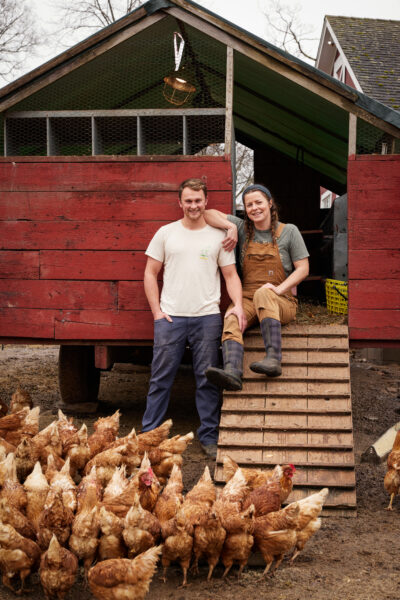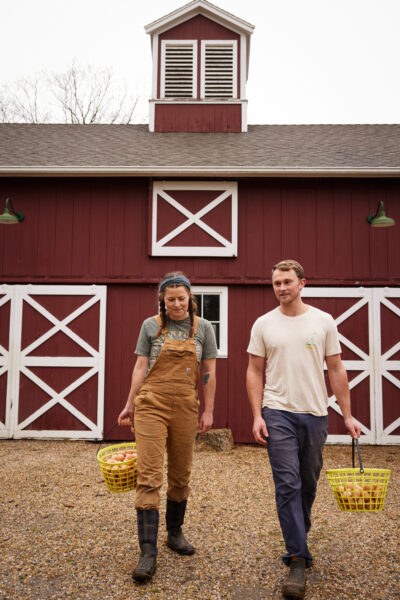February 27, 2024
A Young Farmer Practices Regenerative Agriculture in Kent
By Paul Marcarelli
Photos by Ryan Lavine
The first thing you notice about Tyler Hoadley is how young he looks. At 26, it’s hard to believe he has a college education and years of farm experience under his belt, much less that he is now running his very own farm, Hoadley Hills Farm in Kent, on the land three generations of his family call home. Then again, farming is, in more ways than one, a young man’s game, especially if the aim is to help heal the planet at the same time, which is precisely what Tyler is trying to do.

Committed to the principles of regenerative agriculture, Tyler begins our conversation by referencing the work of Allan Savory, the farmer and agricultural researcher, who believes that only livestock can reverse the desertification of land. Savory advocates what he calls “holistic management,” a complex and not uncontroversial approach to farming that goes beyond rotational grazing to address the reciprocal relationship between people, animals, and the land.
“We are proud to provide the most nutrient-dense food we can to our neighbors,” Tyler says. “While we are nourishing them with this food, we are also nourishing the land. Animal agriculture has gotten a bad rap in recent years because of the way conventional confinement operations take away value from local ecosystems, all while creating an inhumane, polluting environment that hurts people and animals alike. What’s different about having a regenerative livestock operation in your community is that not only do these regenerative practices like rotational grazing allow animals to express their natural behaviors like scratching and foraging for chickens and rooting for pigs, but they create healthier animals and thus more nutrient-dense meat for our customers. It’s worth it,” Tyler concludes. “Even if it does require more labor.”

The labor Tyler describes is undertaken by a small but devoted team of three consisting of him, his high school-aged brother Austin, and his girlfriend Haley Newell whom he met a couple of years ago while working at Roxbury’s Riverbank Farm. But the relatively small size of the team hasn’t kept Hoadley Hills from being extremely productive, last year farming 1500 chickens, 200 egg layers, and 30 pigs. “The fact that we feel like we’re part of something bigger than ourselves keeps us from feeling lonely,” Tyler says. “Going to the farmer’s markets and getting to have those relationships with our customers, who are really grateful we’re doing what we’re doing, definitely keeps us going.”
“I know this seems sort of niche and trendy,” Tyler says when I ask how scalable a regenerative approach to farming is, “But there are a couple of places doing this on a much larger scale with a larger impact overall. One place in Georgia called White Oak Pastures comes to mind that used to be a conventional feedlot farm, and is now a 3,000-acre regenerative farm with not just cows, but also chickens, ducks, and pigs, all out on pastures. And what is remarkable is that they are proving you can have a carbon negative footprint farming this way.”

Since most of Tyler’s peers have left small town life behind for opportunities in big cities, I was curious what he feels he might be missing out on. “Nothing,” he replies. “I’m not making a sacrifice. This is what I want to be doing. I breathe fresh air every day. I do the kind of work I love. And I get to see the impact I’m having on my community.” —hoadleyhillsfarm.com






















